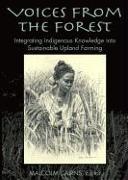Read more
Informationen zum Autor Malcolm Cairns is a research scholar at the Australian National University in the Research School of Pacific and Asian Studies, Department of Anthropology. Klappentext Illustrates the diversity of shifting cultivation systems as well as the power of human ingenuity. This handbook focuses on successful agricultural strategies of upland farmers. It analyses different fallow management typologies! working in conjunction with hundreds of indigenous farmers of different cultures and a broad range of climates. Zusammenfassung Illustrates the diversity of shifting cultivation systems as well as the power of human ingenuity. This handbook focuses on successful agricultural strategies of upland farmers. It analyses different fallow management typologies, working in conjunction with hundreds of indigenous farmers of different cultures and a broad range of climates. Inhaltsverzeichnis Foreword Preface Map of Case Studies Part I: Introduction 1. Challenges for Research and Development on Improving Shifting Cultivation Systems 2. Working with and for Plants: Indigenous Fallow Management in Perspective 3. Conceptualizing Indigenous Approaches to Fallow Management: A Road Map to this Volume Part II: Retention or Promotion of Volunteer Species with Economic or Ecological Value 4. Relict Emergents in Swidden Fallows of the Lawa in Northern Thailand: Ecology and Economic Potential 5. Successional Forest Development in Swidden Fallows of Different Ethnic Groups in Northern Thailand 6. Kammu Fallow Management in Lao P.D.R., with Emphasis on Bamboo Use . 7. The Potential of Wild Vegetables as Permanent Crops or to Improve Fallows in Sarawak, Malaysia 8. Commercialization of Fallow Species by Bidayuh Shifting Cultivators in Sarawak, Malaysia 9. Wild Food Plants as Alternative Fallow Species in the Cordillera Region, the Philippines 10. Farmer-Developed Forage Management Strategies for Stabilization of Shifting Cultivation Systems 11. Managing Imperata Grasslands in Indonesia and Laos 12. Natural Forest Regeneration from an Imperata Fallow: The Case of Pakhasukjai 13. When Shifting Cultivators Migrate to the Cities, How Can the Forest be Rehabilitated? Part III: Shrub-based Accelerated Fallows 14. Fallow Improvement with Chromolaena odorata in Upland Rice Systems of Northern Laos 15. Management of Fallows Based on Austroeupatorium inulaefolium by Minangkabau Farmers in Sumatra, Indonesia 16. Piper aduncum Fallows in the Lowlands of Papua New Guinea 17. Management of Tecoma stans Fallows in Semi-arid Nusa Tenggara Timur, Indonesia 18. Improved Fallows Using a Spiny Legume, Mimosa invisa Martius ex Colla, in Western Leyte, the Philippines 19. Management of Mimosa diplotricha var. inermis as a Simultaneous Fallow in Northern Thailand Part IV: Herbaceous Legume Fallows 20. Growing Ya Zhou Hyacinth Beans in the Dry Season on Hainan Island, China 21. Indigenous Fallow Management Based on Flemingia vestita in Northeast India 22. Benefits of Phaseolus calcaratus in Upland Farming in Northern Vietnam 23. Viny Legumes as Accelerated Seasonal Fallows: Intensifying Shifting Cultivation in Northern Thailand Part V: Dispersed Tree-based Fallows 24. The Role of Leucaena in Swidden Cropping and Livestock Production in Nusa Tenggara Timur, Indonesia 25. Use of Leucaena leucocephala to Intensify Indigenous Fallow Rotations in Sulawesi, Indonesia 26. Upland Rice Response to Leucaena leucocephala Fallows on Mindoro, the Philippines 27. The Naalad Improved Fallow System in the Philippines and its Implications for Global Warming 28. Farmers? Use of Sesbania grandiflora to Intensify Swidden Agriculture in North Central Timor, Indonesia 29. Alnus nepalensis-Based Agroforestry Systems in Yunnan, Southwest China 30. Shifting Forests in Northeast India: Man...

